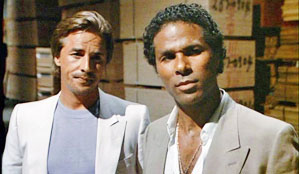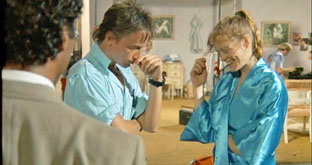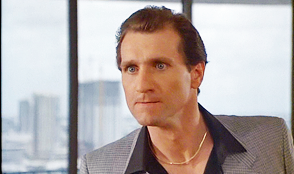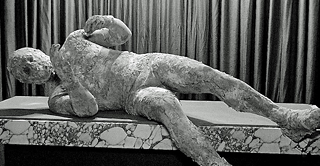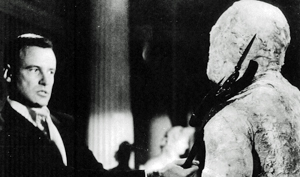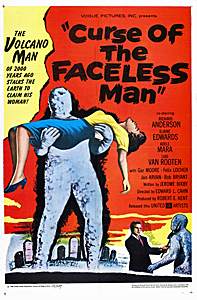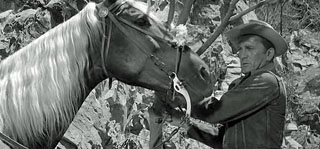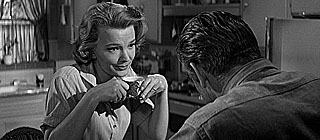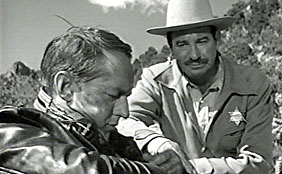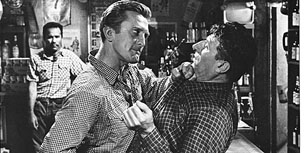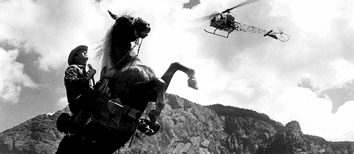FIRST YOU READ, THEN YOU WRITE
by Francis M. Nevins

Anyone remember a Cornell Woolrich story called “The Fatal Footlights� It first appeared in Detective Fiction Weekly for June 14, 1941 and finally found a hardcover home when I included it in my Woolrich collection NIGHT & FEAR (2004). The setting is a cheap burlesque house on New York’s 42nd Street and the plot kicks off when the featured dancer, who performs with her body painted gold all over, collapses on the runway during a show and dies.
We soon learn that it was the gold paint that killed her, and that someone had stolen the paint remover from her dressing room precisely in order to cause her death without laying a finger on her. Of course, what death by gilding conjures up for most of us is not this obscure Woolrich story but the James Bond movie GOLDFINGER (1964) and Ian Fleming’s 1959 novel of the same name. Fred Dannay had reprinted Woolrich’s story in Ellery Queen’s Mystery Magazine for June 1955 under the new title “Death at the Burlesque,†and if the tale came to Fleming’s attention it was probably by this route.
For the media the megadeath of April 2016 was that of pop icon Prince. But just one day earlier, on the 20th of the month, death claimed the director of GOLDFINGER — and of several other Bond films. Guy Hamilton was born in Paris of English parents in 1922 and entered the British film industry after service in World War II. In 1952, having put in a few years as an assistant director, he made his first film, THE RINGER, based on something — whether a novel, a story, a play or just the character is unclear — by Edgar Wallace.
It wasn’t until his involvement with Sean Connery and GOLDFINGER that he came to prominence, and in later years he directed three other Bond films: DIAMONDS ARE FOREVER (1971), again with Connery, and LIVE AND LET DIE (1973) and THE MAN WITH THE GOLDEN GUN (1974), both starring Roger Moore. He also contributed to the more serious type of espionage film as director of FUNERAL IN BERLIN (1966), based on the novel by Len Deighton and starring Michael Caine.
Near the end of his career he helmed two pictures based on Agatha Christie novels and filmed in the manner of MURDER ON THE ORIENT EXPRESS, with a huge budget and tons of guest stars. THE MIRROR CRACK’D (1980) starred Angela Lansbury as Miss Marple, with guest stars including Tony Curtis, Rock Hudson, Kim Novak and Elizabeth Taylor, while Peter Ustinov took the lead as Hercule Poirot in EVIL UNDER THE SUN (1982), with Maggie Smith, Roddy McDowall, James Mason and Diana Rigg among the guest stars.

The actress in GOLDFINGER who met her death by gilding was Shirley Eaton (1937- ). As chance would have it, I met Ms. Eaton twenty-odd years ago, at the Memphis Film Festival. We both happened to pick the same time to have lunch in the convention hotel restaurant and out of the blue she asked if she could sit with me, saying she didn’t like eating alone.
Was I a hot dude in those days or what? No, I didn’t make a pass at her, nor she at me, but in her middle fifties she was still quite lovely. I was interested in Guy Hamilton, GOLDFINGER’s director, and asked if she knew how I could get in touch with him. She told me that she understood he’d retired and moved to Majorca. With no more to go on than that, I wasn’t able to track him down. Now he’s gone for good. Obituaries indicate that Majorca was indeed his final home.

So why was I interested in Hamilton? Not because of GOLDFINGER, or any other Bond film, and not because of the Christie-based pictures either. Just before GOLDFINGER, Hamilton had directed a picture that fascinated me: a commercial failure, not even mentioned in the New York Times obituary, but one that I was using in my Law and Film seminar at St. Louis University and wanted to write about. Odds are that no reader of this column has seen or heard of it.
The literary source of the film was the 1959 novel THE WINSTON AFFAIR by Howard Fast (1914-2003), a super-prolific author who was a Communist and, back in the Red Menace era, served a prison term for contempt of Congress. Among general readers he’s best known as the author of SPARTACUS (1951), source of the blockbuster movie with Kirk Douglas; among mystery fans he’s remembered for the whodunits he wrote as E.V. Cunningham.

No one would call THE WINSTON AFFAIR a mystery but it might be considered a legal thriller. The time is late in World War II and the place is India, which Fast knew well from his work as a war correspondent. Large numbers of British and American troops are serving in the area side by side and tension between the two armies is running high.
Barney Adams, a West Point graduate and wounded combat veteran, is assigned as defense counsel at a court martial. The defendant, Lieutenant Charles Winston, is a middle-aged misfit who at a military outpost in the boondocks cold-bloodedly shot to death a British sergeant in full view of several witnesses.
In order to restore unity with their British allies, the American commanders are determined that Winston be tried promptly and hanged. But since Winston happens to have a Congressman as his brother-in-law, the court-martial must be conducted not in the drumhead style but with the facade of due process preserved. It’s made clear to Adams, however, that he is not to raise the only defense available: insanity.
Everyone with professional expertise admits privately to Adams that Winston was and still is insane but a “lunacy board†with no psychiatric experience has ruled to the contrary. At a press conference before the trial, Adams responds to an Indian journalist’s question with the statement that might does not make right and justice can only exist apart from power. Once the court-martial begins, he jumps the reservation and goes all out to establish an insanity defense, clearly destroying his own military career in the process.

The biggest problem with THE WINSTON AFFAIR is that, like so much “socially conscious†fiction, it’s heavy on earnest rhetoric and light on drama. In MAN IN THE MIDDLE (1963), the movie based on Fast’s novel, the Debate on Great Issues tone is either scrapped or, where kept, is made subordinate to story and character.
Let’s compare the first few paragraphs of WINSTON and the first minute or so of the movie. Fast begins with a banal exchange of dialogue between the area’s commanding general and his sergeant. Guy Hamilton opens the movie with a stunning pre-credits sequence as we watch Winston (Keenan Wynn) stride from his quarters to the tent barracks, walk into the British sergeant’s canvas cubicle, take out a pistol and pump four bullets into him. In the novel we never see the murder.
Barney Adams is the protagonist of both works but his biography differs sharply from one to the other. Fast’s character is a captain, 28 years old, six years out of West Point and an honors graduate of Harvard Law School. The Adams of the movie looks to be in his mid-forties, as Robert Mitchum was when he played the role, and accordingly holds the higher rank of Lieutenant Colonel.
This version of the character knows next to nothing about military law and certainly never went to a civilian law school. He’s invested much more of himself in his career as a soldier than has Fast’s Adams, and if he sacrifices that career trying to save his pathetic and disgusting client, the stakes are much higher than they are for his novelistic counterpart.
The ultimate evil in Fast’s novel is anti-Semitism. Winston is a paranoiac who believes he’s being plotted against by “international Jewry, the Elders of Zion, the whole kit and kaboodle of Nazi filth.†A Jewish officer calls him “a decaying cesspool of every vile chauvinism and hatred ever invented…, who spat in my face and called me a kike and a sheeny….â€

Guy Hamilton and his collaborators drop the anti-Semitism theme, a decision which displeased Fast mightily, and anachronistically replace it with what in the early 1960s was much more timely. You guessed it. Racism. The British sergeant he killed, Wynn tells Mitchum, “was altogether an evil man. He’d sit and spout democracy, then he’d go out….Up into the hills, one of these native villages. He had women up there. Black women. I saw him!….I used to follow him up that hill and watch him with those black witches up there. He was defiling the race, Colonel….He wasn’t fit to live in a white man’s world.â€
As Mitchum is leaving the guardhouse, Wynn is taken out for his daily exercise. Guy Hamilton places us with Mitchum, looking down into the sunken prison yard, watching Wynn pace back and forth in an enclosed stone cube that is a perfect visual correlative for his racism.
I could go on for many more pages — and did just that in a chapter on the movie and Fast’s novel that was first published in the University of San Francisco Law Review and is included in my Edgar-nominated JUDGES AND JUSTICE AND LAWYERS AND LAW (2014) — but space compels me to cut to the bottom line.

The key to understanding the differences between novel and film is that, during the four years between them, two monumental events occurred: the publication of Harper Lee’s TO KILL A MOCKINGBIRD (1960) and the release of the classic film version (1962) with Gregory Peck. Hamilton’s movie does what Fast’s novel couldn’t have done.
Robert Mitchum’s version of Barney Adams creates a new type of Atticus Finch figure: tough and laconic, almost a Philip Marlowe in khaki, where Atticus was loving and compassionate; representing not a sympathetic and clearly innocent black man in the South of the 1930s but a guilty white racist of the worst sort. “It’s easy to fight for the innocent,†Mitchum says, perhaps referring subtly to Atticus. “But when you fight for the sick, for the warped, for the lost, then you’ve got justice.â€
His (and Guy Hamilton’s) Barney Adams doesn’t have a license to practice law but, as I see it, offers a more challenging and less reassuring incarnation of the lawyerly ethos that is permanently linked in the public mind with the years of the Supreme Court under Earl Warren.
We’ve come a long way from Cornell Woolrich and death by gilding and it would be hard to end this column neatly by going back. Since many readers of this column are movie buffs, I’ll close by quoting a letter about MAN IN THE MIDDLE sent to me by Howard Fast early in 1996.
Most of the shooting, he said, took place “on Lord Somethingorother’s estate about ten miles out of London. I was in London with my family and I watched a good bit of the filming. Bob Mitchum was wonderful. For me he was the best film actor of his time. Each day he sat quietly on the set, putting away a quart of whisky. When his scene came he never flubbed a word, while the British actors were flubbing all over the place. They never had to do a second take because of Mitchum… I was awed by the ability of the British film makers to reproduce an Indian setting there near London.â€
